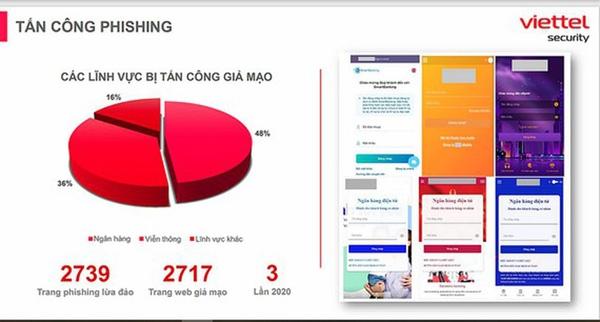
Attacks and cybercriminals are increasing in order to destroy information systems and steal data increasingly causing serious consequences.
According to the Government Committee on Cipher, in Vietnam, many key IT networks of the Party and the governmental agencies have become the target of world cybercriminals that are individuals or teams of people who use technology to commit malicious activities on digital systems or networks with the intention of stealing sensitive company information or personal data and generating profit.
Mr. Do Viet Thang, Deputy Director of the Center for Information Technology and Cybersecurity Monitoring under the Government Committee on Cipher, said that in 2021, the center detected 811,902 threats of cyberattacks, an increase of 5.5 percent compared to 2020.
Amongst them, 757,064 attacks are cyber-attacks aiming to exploit security holes in the electronic portal systems and the operational guidance systems meanwhile approximately 31,013 are cyberattacks related to other forms of unauthorized access. In particular, the number of detected malware-related attacks was 19,091 with many complex and sophisticated attack forms.
In the first quarter of 2022, the Department of Information Security under the Ministry of Information and Communications issued a warning after recording 3,678 cyberattacks that caused problems on information systems in Vietnam including 576 Phishing, 375 website defacement, an attack on a website that changes the visual appearance of a website or a web page, and 2,727 malware attacks, an increase of 2.94 percent compared to the fourth quarter of 2021 with 3,573 cases.
Cyber attackers have taken advantage of public attention to the Covid-19 epidemic development, the effect of vaccination with the third booster dose to continue to increase cyberattacks, distribution of malicious code to appropriate and destroy information of users as well as organizations.
From the beginning of 2022, the Department of Information Security has forecasted that phishing will be one of the four main trends in cyber attacks in 2022, along with three other prominent trends, including targeted attacks that combine different types of attacks and sophisticated measures to spread malicious code to appropriate information of organizations and individuals, attacks on IoT devices, especially surveillance cameras, attacks on Cloud platforms.
The agency believes that phishing attacks will continue to be common, especially phishing attacks using Deepfake technology which are images and videos created using computers and machine learning software to make them seem real, even though they are not.
According to the Department of Information Security, the Covid-19 pandemic has resulted in individuals and organizations using the Internet more than ever to stay connected with others, for entertainment and working purposes and to do their shopping, so online fraud cases tend to increase markedly both in the world and in Vietnam.
In addition to fraud to steal personal information, impersonating financial - banking institutions for online fraud is the most prominent. Worse, many users still have limited digital skills and information security skills, so they are easily deceived.
Statistics around the world have shown that since the Covid-19 epidemic has broken out, the number of phishing attacks has increased by 667 percent. In 2021, the surveillance system of Viettel Cyber Security Company recorded the number of phishing attacks in this form tripled compared to the same period in 2020.
About 2,739 phishing websites and about 2,717 fake websites forgery has been recorded. These websites often target a number of specific areas such as finance, banking, law enforcement agencies, and the media with the aim of tricking users into appropriating property.
